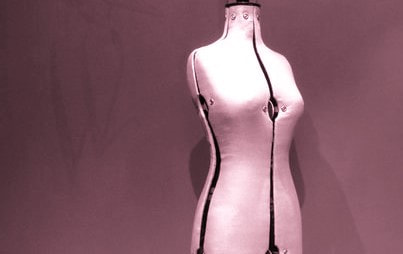|
Something worth keeping in mind with any creative endeavor: The thing that represents the work is NOT the work itself. No one confuses notes on a staff with actual music or thinks that a set of house plans is in fact a building… yet with writing it can be all too easy to conflate the representation* with the actual thing. [*Have you noticed that most AI-generated stories read like a plot synopsis? A really shitty plot synopsis? Because for the most part, that’s what they are. Reading them, we’re rarely – if ever – actually ‘in scene,’ and virtually never to the point of immersion where we forget we’re reading something and are lost in the story. That’s because they’re basically just a structure… a composite based on an amalgamation of several other story structures, assembled into a single construct by a high-powered algorithm. And of course, most “write your novel now!” sites are all about following this same path. As discussed here. Often with similar results.] I think part of this comes from us thinking of the story structure (the plot) as the story itself, when the plot is just the framework on which we build the actual story. Imagine someone wanted to create a wonderful dress. Something unique and beautiful and amazing, which—hopefully—others might love as well. But instead of thinking about a one-of-a-kind design, using flowing fabrics with interesting colors and textures and shapes, they spent their time worrying about getting the perfect mannequin. Maybe one that represented the largest cross-section of people—or maybe one considered the ‘ideal’ size—so that their work might appeal to the largest number of people. All with little thought to the dress itself. That sounds goofy, yet it’s analogous to what we often see… fealty to the minor god of “subject matter*” over other considerations… like story and character and emotional connection… and the actual craft of the writing itself. [*You will often see on social media an aspiring writer bemoaning the fact that an agent or editor called out something specific in their #MSWL—for example, “Love to see an MG about a mystery set at summer camp!”—and the writer turned in something they thought fit the bill… and it was summarily rejected. And they don’t get it, because they sent the agent “exactly what she asked for.” I understand the frustration - as far as it goes - but it’s important to understand when an agent or editor mentions something like the above in their wish list, what they’re actually saying is, “I’d like to see a really well-written, emotionally compelling middle grade novel about a group of kids—sort of on their own, away from home—solving a problem together.” With the unstated ‘well-written, compelling’ part the most important criteria, by far. Again, it’s really about the dress itself more than the specifics of the mannequin, right?] If you gave the same basic plot to a bunch of different writers, you’d get a bunch of very diverse books. Because each writer is unique, with a different voice and life experience and perspective on the world. Thinking it could be otherwise would be like thinking if you took a dozen different dress designers and gave them all the same mannequin to build a dress upon, you’d get twelve identical dresses. I’m not saying a mannequin isn’t an important tool to a dress designer. Of course you want a shape to build the dress upon. But the mannequin is in no way the dress itself. The story--your story—is the singular thing you have. Your voice, your vibe, your viewpoint… your weird take on life that makes your stuff interesting and unique and oddly compelling. That’s what you have. And the journey your character goes through as they transit the events in the story is the thing that shines a light on what makes you and your viewpoint worth reading… not the scaffolding. Happy dressmaking!
4 Comments
Eric
7/9/2023 02:43:51 pm
Great insight👍 love it 🤠
Reply
John Pillow
7/17/2023 07:23:19 am
Great analogy. The ‘perfect’ form may be beautiful at first glance but predictable and boring. Conversely, imagine trying to design a high-fashion dress as a ‘one size fits all’?!
Reply
Agree, and agree. We want to avoid predictable and boring at all costs! The mannequin, which many aspiring writers somehow think is the whole thing, is analogous to a book's title. Yes, you have to have one, and a good one is better than a bad one, but it's not the core of the work.
Reply
Leave a Reply. |
The Craft and Business of
|

 RSS Feed
RSS Feed